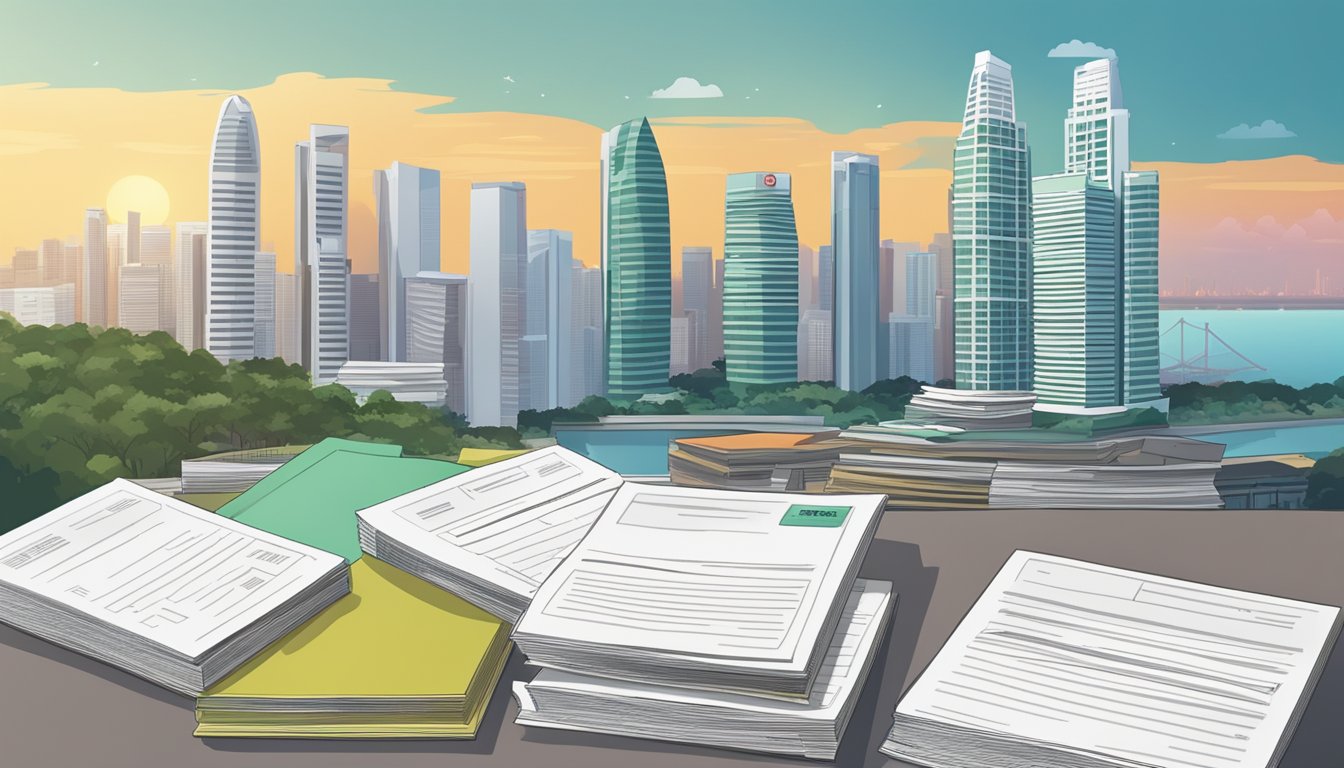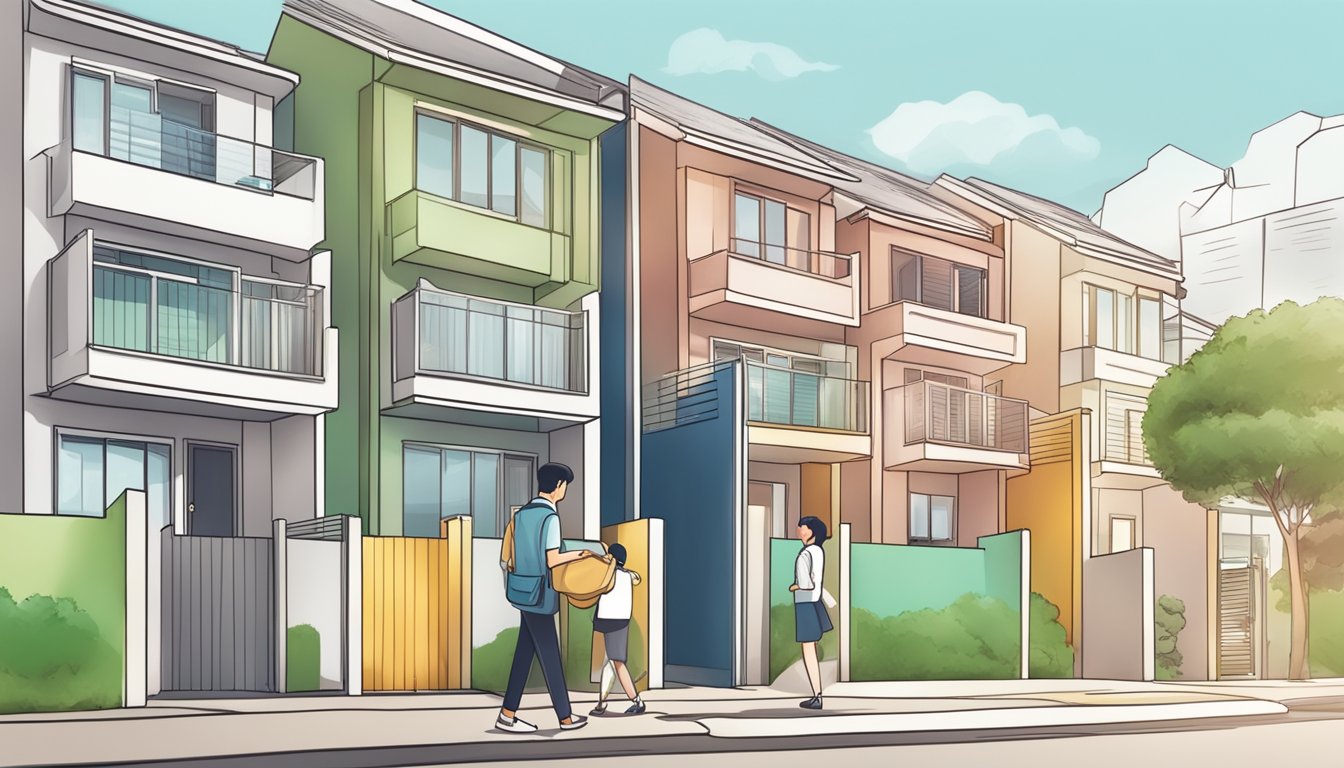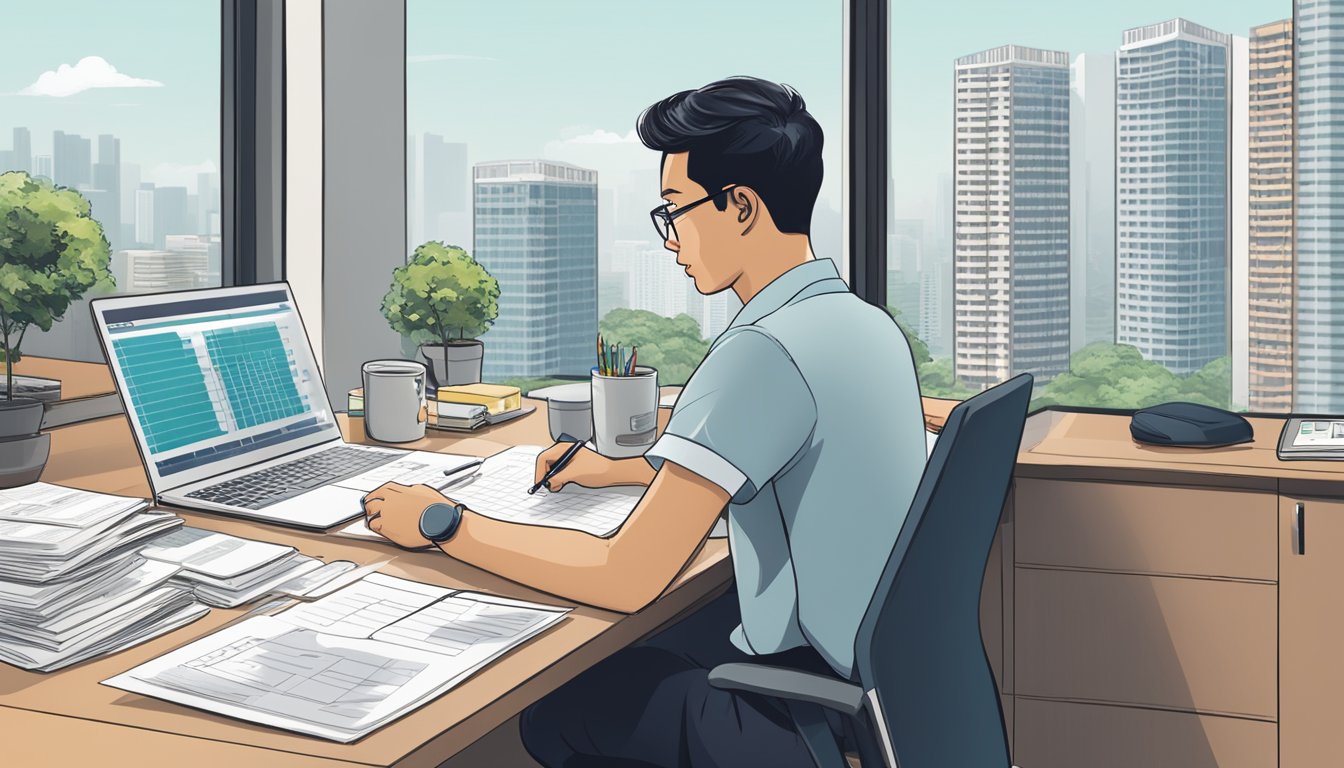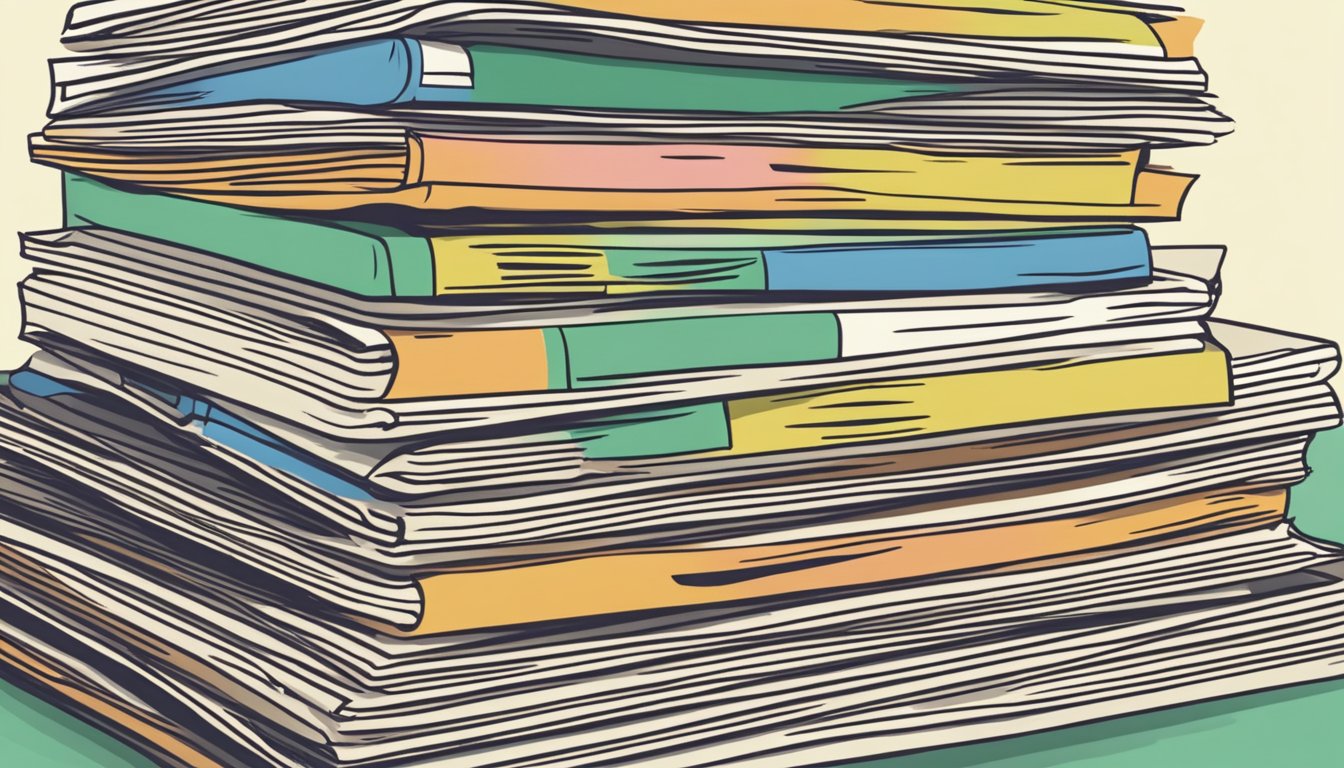Introduction

If you’re a homeowner in Singapore, you’re likely familiar with the Central Provident Fund (CPF) and how it can be used to finance your home. However, what you may not know is that using CPF funds for housing comes with accrued interest, which can affect your finances when you sell your property. In this article, we’ll explore the topic of accrued interest on CPF used for HDB flats in Singapore and what you need to know to make informed decisions about your home financing.
Understanding CPF and Its Role in Singapore Housing
The CPF is a social security savings scheme in Singapore that aims to help citizens save for retirement, healthcare, and housing. One of the ways CPF can be used is to finance the purchase of an HDB flat. This can be done by using funds from the Ordinary Account (OA) and the Special Account (SA) to pay for the downpayment, monthly instalments, and other related costs.
Accrued Interest on CPF: What You Need to Know
When you use CPF funds for housing, you’ll be charged accrued interest on the amount withdrawn. This is the interest that you would have earned if your CPF savings had not been withdrawn for housing. The interest is computed on the CPF principal amount withdrawn for housing on a monthly basis (at the current CPF Ordinary Account interest rate) and compounded yearly. It’s important to note that the accrued interest is charged to the CPF account holder, not the property itself. This means that you’ll need to pay back the principal amount plus the accrued interest when you sell your property.
Key Takeaways
- Using CPF funds for HDB flats in Singapore comes with accrued interest, which is the interest that you would have earned if your CPF savings had not been withdrawn for housing.
- The accrued interest is charged to the CPF account holder, not the property itself, which means that you’ll need to pay back the principal amount plus the accrued interest when you sell your property.
- Understanding how accrued interest works is crucial for making informed decisions about your home financing and planning for retirement with CPF.
Understanding CPF and Its Role in Singapore Housing

CPF Overview
The Central Provident Fund (CPF) is a social security savings scheme that is mandatory for all Singaporean citizens and permanent residents. It is a comprehensive system that helps individuals save for retirement, healthcare, home ownership, and other purposes. The CPF is managed by the CPF Board, which is a statutory board under the Ministry of Manpower.
The CPF Ordinary Account
The CPF Ordinary Account (OA) is one of three accounts under the CPF scheme. It is used to save for housing, education, and investment. When you purchase a home in Singapore using CPF savings, the amount withdrawn from your CPF OA includes both the principal amount and the accrued interest.
Housing Grants and the Enhanced CPF Housing Grant
The Singapore government offers various housing grants to help citizens and permanent residents purchase their first home. One of these grants is the Enhanced CPF Housing Grant (EHG), which was introduced in September 2019 to replace the previous Additional CPF Housing Grant (AHG) and Special CPF Housing Grant (SHG).
The EHG provides up to $80,000 in housing grants for eligible first-time homebuyers. The grant is disbursed into the homebuyer’s CPF Ordinary Account and can be used to offset the purchase price of the flat, reducing the amount of CPF savings required for the downpayment and monthly instalments.
In conclusion, the CPF plays a crucial role in Singapore’s housing market. It provides individuals with a means to save for their dream home and offers various housing grants to make homeownership more affordable. Understanding how the CPF works and the role of the CPF Ordinary Account and housing grants is essential for anyone looking to purchase a home in Singapore.
Accrued Interest on CPF: What You Need to Know

If you are a homeowner in Singapore, you may be familiar with the concept of accrued interest on your CPF. Accrued interest is the interest amount that you would have earned if your CPF savings had not been withdrawn for housing. Here is what you need to know about accrued interest on CPF.
Accrued Interest Explained
When you use money from your CPF Ordinary Account (OA) to pay for a house in Singapore, you have to pay back the same amount plus an accrued interest when you sell the property. The interest is computed on the CPF principal amount withdrawn for housing on a monthly basis (at the current CPF Ordinary Account interest rate) and compounded yearly.
The CPF accrued interest refers to the interest that your principal amount would have earned in your CPF Ordinary Account (OA), in the same duration. At the point of writing, CPF OA interest is 2.5% per annum. If the money was in your OA and you were earning interest off it, you’d be a happy homeowner.
Impact on Retirement Savings
The CPF accrued interest can have a significant impact on your retirement savings. When you sell your property, you will need to refund the principal amount you took from your CPF account, plus accrued interest. This interest amount is equal to what you would have earned, had you kept the money in your account.
The CPF accrued interest is an important factor to consider when planning for your retirement. The more money you withdraw from your CPF account for housing, the more accrued interest you will have to pay back when you sell the property. This can reduce the amount of money you have for your retirement.
Calculating Your Accrued Interest
Calculating your accrued interest can be complicated, but it is important to know how much you will have to pay back when you sell your property. The accrued interest is calculated at a prevailing rate of 2.5% per annum and accumulated for the duration you have used the money from your CPF account for housing. The accrued interest is also compounded yearly.
To calculate your accrued interest, you can use the following formula:
Accrued Interest = Principal Amount x (1 + CPF OA Interest Rate/12)^Number of Months Used
For example, if you used $100,000 from your CPF OA for housing for 5 years (60 months), your accrued interest would be:
Accrued Interest = $100,000 x (1 + 0.025/12)^60 = $15,119.42
In conclusion, it is important to understand the concept of accrued interest on CPF when using your CPF savings for housing in Singapore. The accrued interest can have a significant impact on your retirement savings, so it is important to plan ahead and calculate how much you will have to pay back when you sell your property.
Buying and Selling HDB Flats with CPF Funds

If you are planning to buy or sell an HDB flat in Singapore, you may be wondering how your CPF funds will come into play. Here’s what you need to know about using CPF for HDB purchase and selling your flat.
Using CPF for HDB Purchase
When you buy an HDB flat, you can use your CPF funds to pay for it. The amount of CPF funds you can use depends on the type of HDB flat you are buying, your age, and your income.
Here’s a breakdown of the maximum amount of CPF funds you can use for different types of HDB flats:
| Type of HDB Flat | Maximum CPF Funds |
|---|---|
| New 2-room Flexi | $100,000 |
| New 3-room | $120,000 |
| New 4-room | $160,000 |
| New 5-room | $200,000 |
| New Executive | $240,000 |
Keep in mind that you will also need to make an initial downpayment for your HDB flat, which can be paid using your CPF funds. However, you will need to pay any stamp duties and legal fees using cash.
Selling Your Flat and CPF Considerations
If you are planning to sell your HDB flat, you will need to consider the amount of CPF funds you have used to finance your flat. When you sell your flat, you will need to refund any CPF funds used with accrued interest.
The amount of accrued interest you need to refund depends on the amount of CPF funds you have used and the length of time you have used them. Since the accrued interest is calculated at 2.5% per annum, the longer you have used your CPF funds, the more accrued interest you will need to refund.
Here’s an example of how accrued interest is calculated:
Suppose you used $100,000 of CPF funds to finance your HDB flat and sold it after the minimum occupancy period of five years. The total amount of accrued interest you will need to refund is:
$100,000 x 2.5% x 5 years = $12,500
If you have received any housing grants, you will also need to refund them along with the accrued interest. The housing grant refund will usually be returned to your Ordinary Account. But if you had received more than $30,000 in grants, part of this amount may be credited to your Special Account/Retirement Account and MediSave Account.
Minimum Occupancy Period Requirements
When you buy an HDB flat using your CPF funds, you will need to fulfill the minimum occupancy period (MOP) requirements. The MOP is the minimum period of time you need to live in your HDB flat before you can sell it or rent it out.
The MOP for HDB flats depends on the type of flat you buy:
| Type of HDB Flat | Minimum Occupancy Period |
|---|---|
| New 2-room Flexi | 5 years |
| New 3-room | 5 years |
| New 4-room | 5 years |
| New 5-room | 5 years |
| New Executive | 5 years |
If you sell your HDB flat before the MOP is fulfilled, you will need to pay a resale levy. The resale levy is a fee paid to HDB to compensate for the subsidy given to you when you bought your flat.
Keep these considerations in mind when using your CPF funds to buy or sell an HDB flat in Singapore.
CPF Withdrawals and Housing Loans

If you are a Singaporean citizen or Permanent Resident, you are eligible to use your CPF savings to finance your HDB flat. However, it is important to understand the rules and regulations governing CPF withdrawals and housing loans.
Withdrawal Limits and Conditions
The Board calculates the accrued interest on the amount withdrawn for housing on a monthly basis, at the current CPF Ordinary Account interest rate, and compounded yearly. Any CPF funds used to finance your house in any way will be included in the amount that you will have to return to your CPF accounts.
There are certain limits and conditions that you must meet to withdraw your CPF savings. For example, you must be at least 55 years old and have a minimum sum in your CPF account. Additionally, you can only withdraw a certain amount of money from your CPF account for housing purposes.
Understanding Housing Loans and CPF
When you take out a housing loan, you can use your CPF savings to pay for the down payment, monthly instalments, and other related costs. However, the amount of CPF savings that you can use is subject to certain limits.
For example, you can only use your CPF savings to pay for the down payment if the loan-to-value ratio of your property is 75% or less. Additionally, you can only use your CPF savings to pay for the monthly instalments if the amount of your monthly instalments does not exceed a certain percentage of your monthly income.
Refinancing and CPF Usage
If you have an existing mortgage, you can consider refinancing your loan to take advantage of lower interest rates. However, you should be aware that refinancing may affect your CPF usage.
When you refinance your mortgage, you will need to pay off your existing loan and take out a new loan. This means that you will need to use your CPF savings to pay off your existing loan before you can use them to pay for the new loan.
In conclusion, understanding the rules and regulations governing CPF withdrawals and housing loans is crucial if you are planning to use your CPF savings to finance your HDB flat. By doing so, you can ensure that you are using your CPF savings in a responsible and sustainable manner.
Planning for Retirement with CPF

Planning for retirement can be a daunting task, especially when balancing the costs of housing and your retirement needs. Fortunately, the Central Provident Fund (CPF) can help you achieve your retirement goals. In this section, we will explore how you can plan for your retirement with CPF.
Balancing Housing Costs and Retirement Needs
When it comes to housing, CPF can help you finance your home while still saving for retirement. However, it is important to balance your housing costs with your retirement needs. CPF allows you to use your Ordinary Account (OA) savings to pay for your home, but you should also consider setting aside some money in your Special Account (SA) and Medisave Account (MA) for your retirement and healthcare needs.
CPF Top-Ups and Retirement Account Planning
To ensure that you have enough savings for retirement, you may consider making CPF top-ups and planning for your Retirement Account (RA). CPF top-ups can help you reach the Full Retirement Sum (FRS) and receive higher payouts during retirement. You can also pledge your property to meet the FRS. Additionally, planning for your RA can help you ensure that you have enough savings for your retirement needs.
CPF Investments and Future Planning
Aside from CPF top-ups, you can also consider investing your CPF savings to grow your retirement funds. CPF offers several investment options, such as the CPF Investment Scheme (CPFIS) and the CPF Retirement Sum Scheme (RSS). These investment options can help you achieve your future financial goals.
In summary, CPF can help you plan for your retirement needs while balancing your housing costs. By making CPF top-ups, planning for your RA, and investing your CPF savings, you can ensure that you have enough savings for your retirement.
Frequently Asked Questions

How can you zestily calculate the accrued interest on your HDB flat using CPF?
Calculating the accrued interest on your HDB flat using CPF can be a bit tricky, but it is essential to understand how much you owe to avoid any surprises when it is time to sell your property. The CPF Board calculates the accrued interest on the amount of CPF savings withdrawn for housing on a monthly basis at the current CPF Ordinary Account interest rate, which is currently at 2.5% per annum. You can use the CPF Accrued Interest Calculator to determine the amount of accrued interest on your HDB flat.
What’s the buzz about fully paying off accrued interest for your HDB flat?
If you have used CPF funds to finance your HDB flat, you will need to pay back the principal amount with the accrued interest when you sell your property. It is crucial to note that the accrued interest is not a penalty or fee but is the interest amount you would have earned if your CPF savings had not been withdrawn for housing. You can choose to pay off the accrued interest fully or partially, depending on your financial situation.
Can you gleefully clear your CPF accrued interest, and if so, how?
Yes, you can clear your CPF accrued interest by using your CPF Ordinary Account (OA) savings. You can also use your CPF Special Account (SA) and CPF Retirement Account (RA) savings if you have sufficient balances. However, it is essential to note that once you have used your CPF savings to pay off the accrued interest, you will not be able to use them for other purposes like investments or education.
When does the accumulation of CPF accrued interest come to a thrilling halt?
The accumulation of CPF accrued interest comes to a thrilling halt when you sell your HDB flat or reach the age of 55. If you sell your HDB flat, you will need to pay back the principal amount with the accrued interest using your CPF savings. If you reach the age of 55, your CPF savings will be transferred to your CPF Retirement Account (RA), and you will no longer need to pay the accrued interest.
In the event of your demise, what electrifying fate awaits your CPF accrued interest?
In the event of your demise, your CPF savings, including the accrued interest, will be distributed to your nominees or beneficiaries. If you do not have any nominees or beneficiaries, your CPF savings will be transferred to the Public Trustee’s Office.
Upon reaching the grand age of 55, what happens to your accrued interest – does the excitement continue?
Upon reaching the age of 55, your CPF savings will be transferred to your CPF Retirement Account (RA), and the excitement of accumulating CPF accrued interest will come to an end. However, you will still be able to earn interest on your CPF savings, and you can withdraw them when you reach the CPF withdrawal age.




